The old warehouse was once characterized by huge stacks of paper and the constant rustling of documents. For many, it should be on the edge of a quiet revolution. Senior logistics manager Tom had spent decades navigating this paper-rich world. All his work was a bit accustomed to the tactile reassurance of manifests, waybills, and delivery bills.
However, they consider that the company should be about to undergo a radical transformation. Tom has seen a digital factory approach that mixes critical change management with the need to completely transform logistics documentation.
This wasn't just about introducing new technology and tackling ingrained habits. These were especially among people like Rob. Rob was a seasoned warehouse worker and struggled with the daily tasks of paper processes that he didn't want to change.
Sounds familiar to you? Did you know that the development of an IT architecture can cover all aspects of logistics document processing? In contrast, digitizing the last 20 percent of documents is a challenge for every warehouse.
Undoubtedly, everyone can quickly realize that the changeover will not happen overnight. It required a strategic, step-by-step approach, recognizing that not all communication could be digitized immediately. You may need a software partner to ensure adoption and initial success.
Curious to learn how Tom, Rob, and their company navigated these challenges and successfully ushered in a paperless future? Read on to discover the full story of the digital transformation in logistics.
Paper logistics documentation examples and understanding of types
The complicated world of global trade relies heavily on accurate and comprehensive documentation. Even in an increasingly digital age, the backbone of efficient supply chain operations often remains rooted in paper-based logistics document management. These documents serve an important role for records that enable smooth transactions, and of course, ensure regulatory compliance.
Export documentation for the supply chain
The journey of goods across borders begins with rigorous export procedures dictated by various governmental bodies.
Export declaration. This is the foundational document for any export. It's a formal statement submitted to the Customs Department by the owner, exporter, or agent, providing comprehensive information about the goods and the transaction. While often available through online systems today, manual paper systems were once the norm. Obtaining ED approval is critical before goods arrive at the wharf, container depot, or airport.
Export permits. Beyond the declaration, certain goods require specific permits for export, which must be detailed within the export declaration. The Customs Department, often on behalf of various government and non-government agencies, controls these exports, governing specific goods. Most export permits are granted by specialized government organizations.
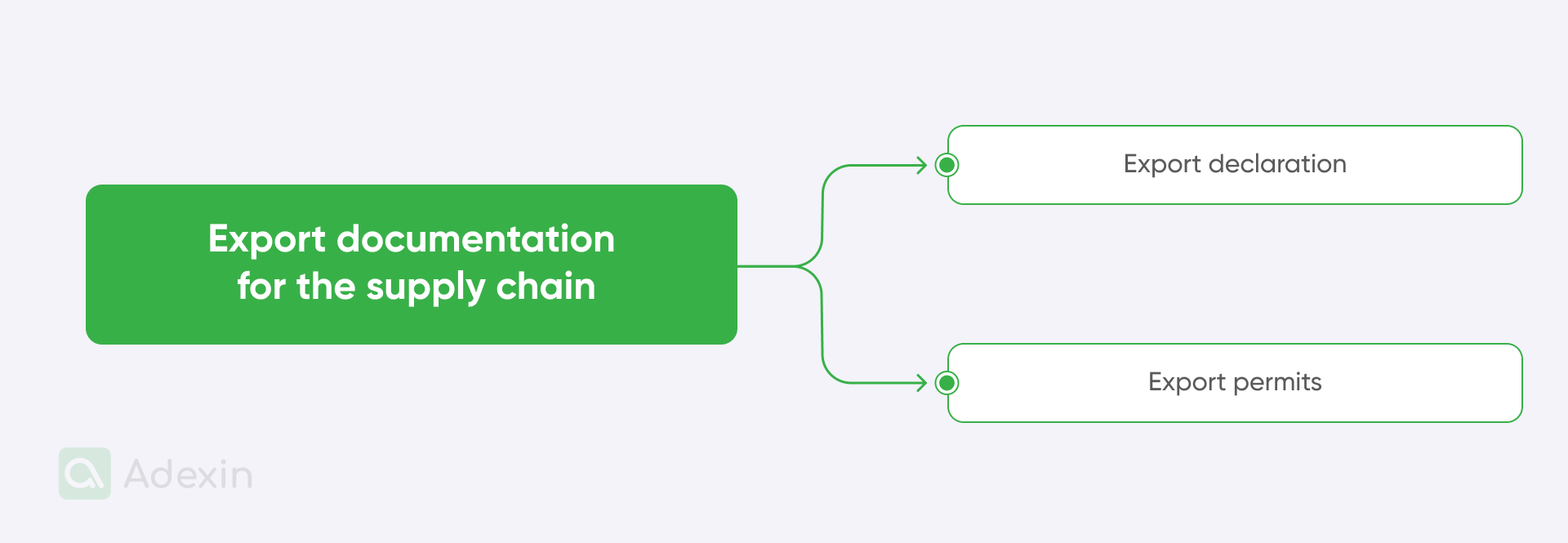
Commercial documents and document archiving
These documents are the bedrock of domestic and international trade, often familiar to outside specialized logistics operations. Many might have been prepared during the initial export order, and some are specific to international transactions or contractual agreements.
Packing list. A detailed customer service document meticulously outlines what will be packed for export. Copies are often placed outside each package and inside the container door, enabling the recipient to easily verify contents upon arrival.
Commercial invoice. A standard document in any buyer-seller exchange, crucial for payment and customs documents valuation. Complying with all the buyer's instructions and information is imperative when preparing this.
Bill of exchange. In international trade, where simple cheques are insufficient due to national boundaries, differing currencies, and separate banking systems, a bill of exchange acts as a financial instrument to secure payment through the banking system. Other payment methods also exist.
Marine insurance policy or certificate. These documents, prepared by the exporter's insurance company, provide crucial coverage for goods during transit. Large exporters are frequently authorized to prepare their insurance certificates as part of their standard export documentation procedures.
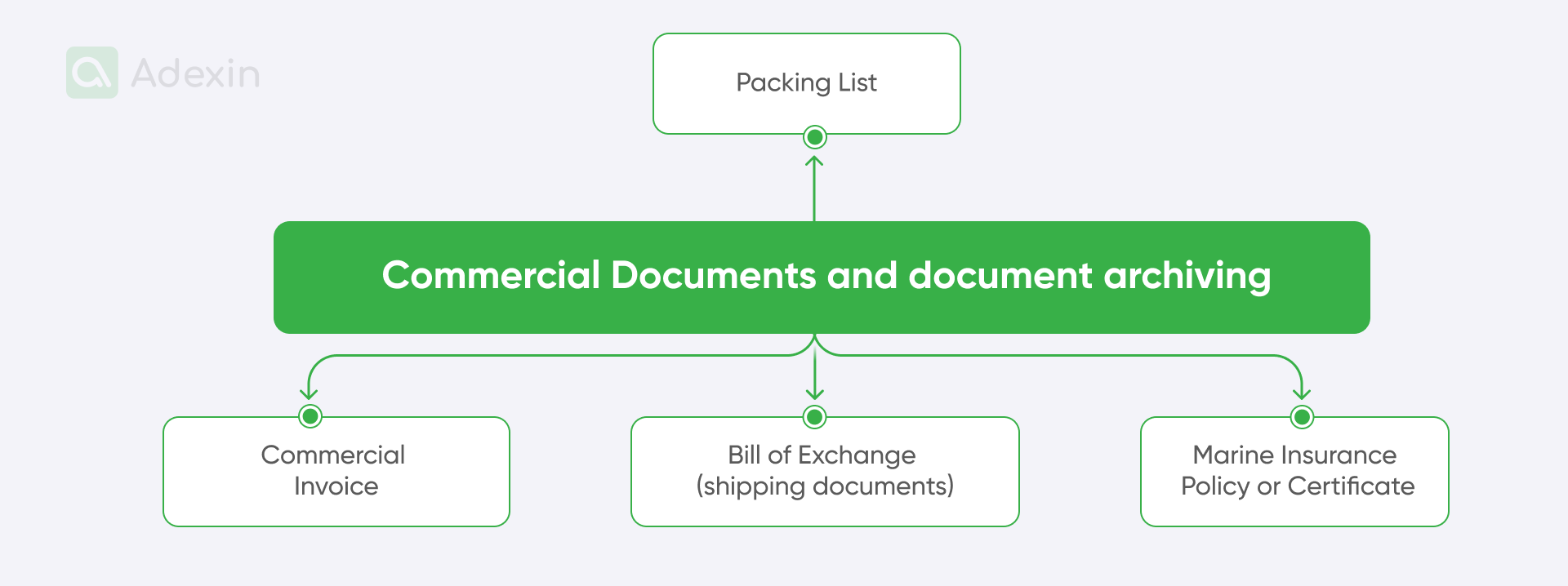
Transport documentation for air freight forwarders
These documents are the lifeblood of physically moving goods, with specific requirements varying based on the mode of transport. Their primary purpose is to identify what is being carried and its origin and destination country.
Shipper's letter of instruction. This document provides explicit instructions from the exporter on how they want their goods handled for air freight. Sent to the freight forwarder or carrier, it centralizes all transportation information from collection to delivery.
Airway bill. An AWB accompanies goods shipped by international courier, enabling tracking. It serves as both an airline receipt of goods and a legally enforceable contract of carriage between the shipper and the carrier. AWBs are non-negotiable and must include vital details like shipper/consignee names and addresses, destination airport, and value of contents.
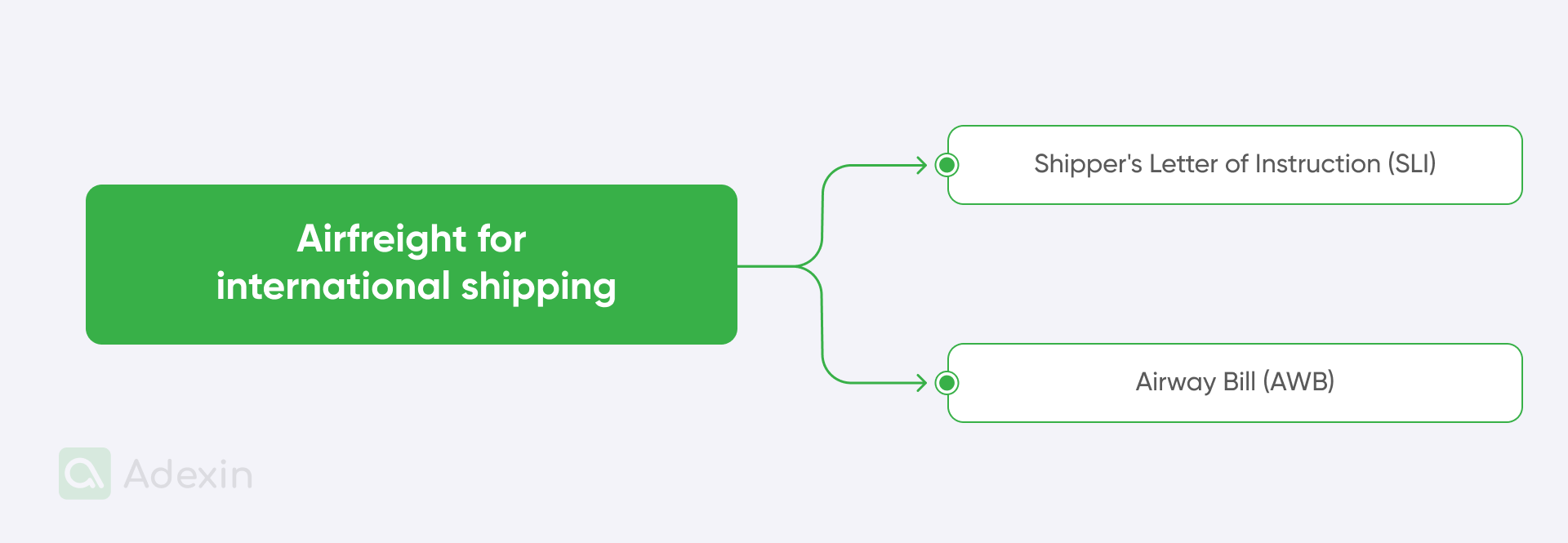
Transport documentation for sea freight forwarders
Forwarding instructions. Most shipping companies rely on this document to prepare and issue the Bill of Lading. It should be completed accurately and provided promptly to the shipping company, enabling them to prepare Bills of Lading soon after the vessel sails. Copies and Border Force clearance documents confirm export permission and allow the vessel to sail.
Pre-receivable advice. This document, often including the Customs Export Declaration (ED), is required for goods entering the port for export. In many cases, it's the sole document needed to admit general containers to the port's container terminal.
Bill of lading or waybill. It is the primary document between the ship's operator and the exporter. It serves as a receipt for the cargo once received at the nominated point, provides documentary evidence of the contract of carriage, and acts as a document of title for the specified goods.
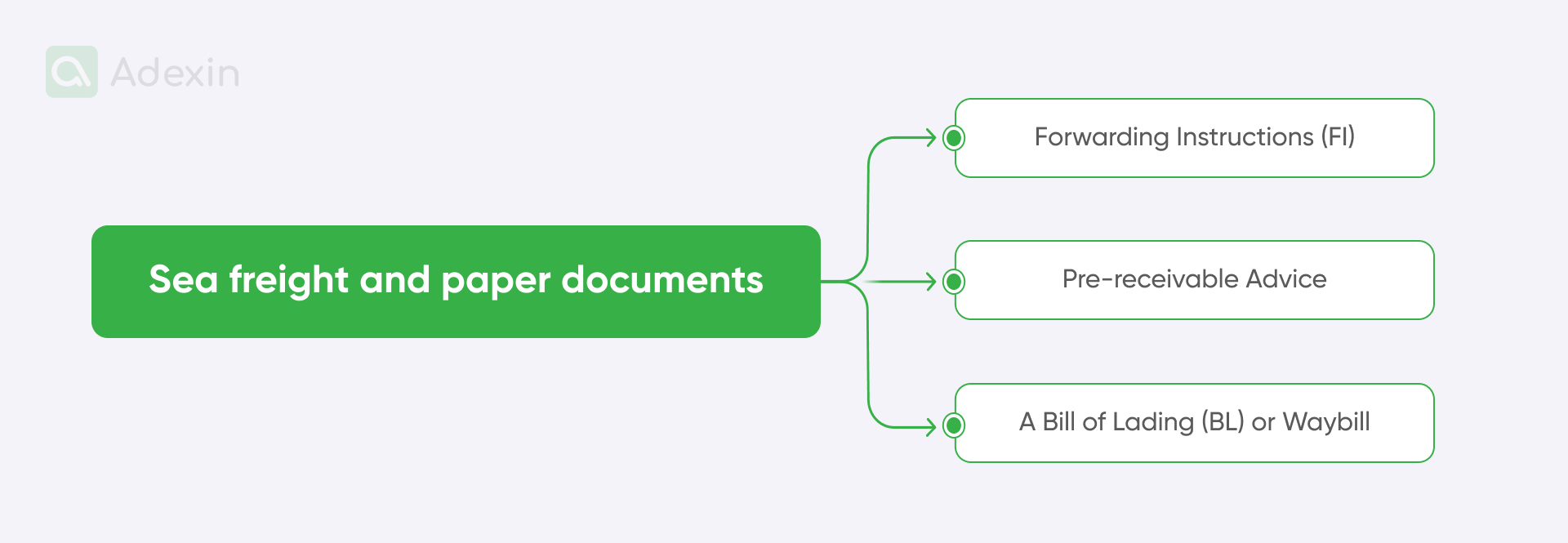
Freight documents for parcels, post, and couriers
Parcel post receipts. These are small documents issued by the Post Office as receipts for posted goods. They are often attached to a larger sheet to prevent loss. These should be checked for uniformity with other transportation documents.
Courier dockets. A receipt from the courier company detailing a waybill number for tracking the consignment's progress during transit. Usually arranged for door-to-door shipments.
* Important note. Neither Parcel Post Receipts nor Courier Dockets are documents of title.
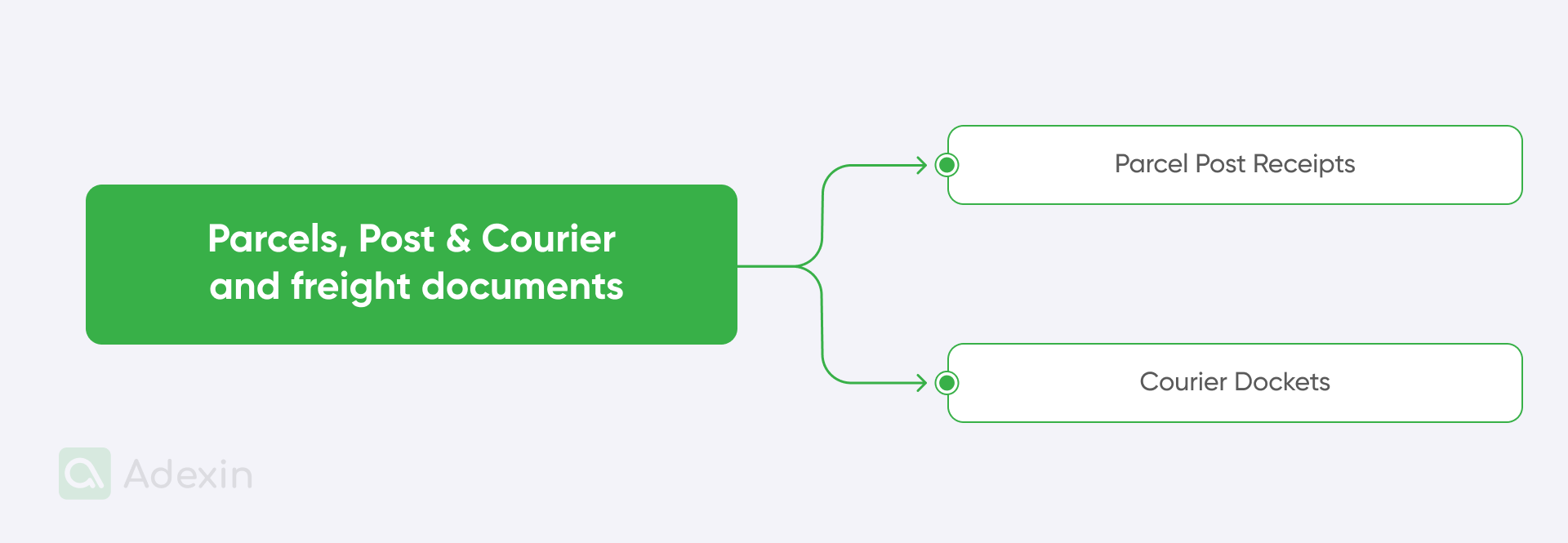
Documents required by the importing country
Each importing country, and even specific markets, will have unique and precise requirements for goods entering their borders.
Paper documents credit. When shipping against a Documentary Credit, it will explicitly outline all documents the buyer requires to complete the transaction, including those mandated by the importing country's customs authorities.
Certificate of origin. A specific document, generally certified by an approved Chamber of Commerce, identifying goods and formally attesting to their origin in a specific country.
Declaration of origin. A self-declaration by the exporter, identifying and attesting that the goods originate in a specific country.
The requirements for either vary based on trade agreements, the destination market, and the type of goods. For countries with Free trade agreements, checking with the relevant Department of Foreign Affairs and Trade is advisable for logistics companies. Unlike the Certificate of origin, this declaration does not require third-party certification and is usually included directly on the commercial invoice or as a separate accompanying document. It is commonly used in trade between countries that are part of a Free trade agreement.
Consular or Embassy stamping. Some countries demand Consular or Embassy stamped and validated invoices. After completion and signing, these invoices must be presented to the Consulate or Embassy for stamping and signature, often for a fee. Exporters must factor in potential delays if the embassy is not locally available.
Pre-inspection certificate. A clean report of findings is required under some terms of sale and involves inspecting goods before shipment to the exporting country.
Other special transportation documents
Beyond the standard categories, certain goods or destinations may necessitate highly specialized, other important shipping documents:
Certificate of free sale
Certificate to a foreign government
Certificate of exportability
Certificate for cosmetics
Health certificate for collagen and gelatin products
Exporting of medical devices
Ingredients certificate
Certificate of analysis
Halal certificate
Safety data sheet
Radiation certificate
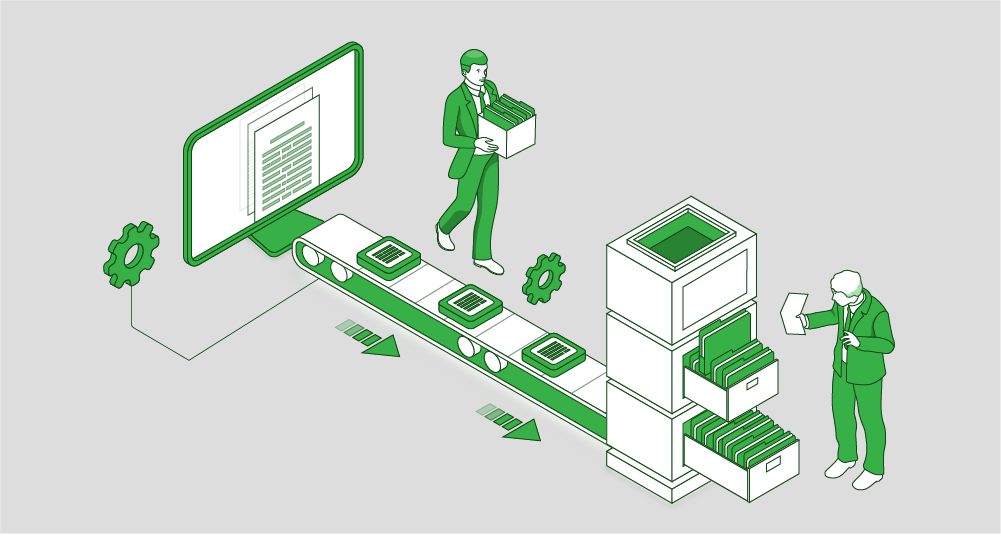
Key challenges in reducing logistics paperwork
From a total trade documentation costs perspective, reducing logistics paperwork has obvious advantages. The biggest cost factor in logistics is sea freight, which accounts for 55% of total transportation and supply chain operations costs. In addition, managers are keen to minimize storage and inventory management costs, with picking alone accounting for 65% of total costs and 50% of the workforce.
This is where technology investment in developing tools to handle stock and warehouses more efficiently will help with cost management. Reducing paperwork directly impacts these areas by streamlining the entire decision-making process and integrating the stages of inventory replenishment. So, product allocation in warehouse systems and product allocation to storage locations. By optimizing these processes, the amount of labor required for picking can be significantly reduced. This has a direct impact on labor costs and overall efficiency.
These shipping documents' sheer volume and complexity highlight why reducing logistics paperwork is such a critical yet challenging endeavor. For Tom and Rob, the aspiration for a paperless operation confronts both external and internal hurdles.
External challenges for digitizing documents. At the heart of the problem are disconnected systems like warehouse management systems (WMS), transportation management systems (TMS), and enterprise resource planning (ERP) systems that often fail to communicate seamlessly. This fragmentation necessitates manual order processing and slow workflows, creating bottlenecks and leading to frequent human errors as data is repeatedly entered and reconciled across disparate platforms.
Internal challenges and customs documents. Within the organization, the reliance on paper and fragmented digital processes results in a severe lack of visibility, forcing managers into a reactive mode rather than proactive planning. There's constant pressure. So, this leaves no time for the long-term strategic planning essential for true efficiency gains. This leads to a philosophical question echoing the logistics industry: "Why does logistics still feel stuck in 2005, even though it's 2025?"
Addressing these challenges requires more than just digitizing existing papers. It demands a holistic approach to automation and process optimization. While many off-the-shelf tools promise solutions, they often fail to cover unique business needs, necessitating careful selection and sometimes tailored integrations.
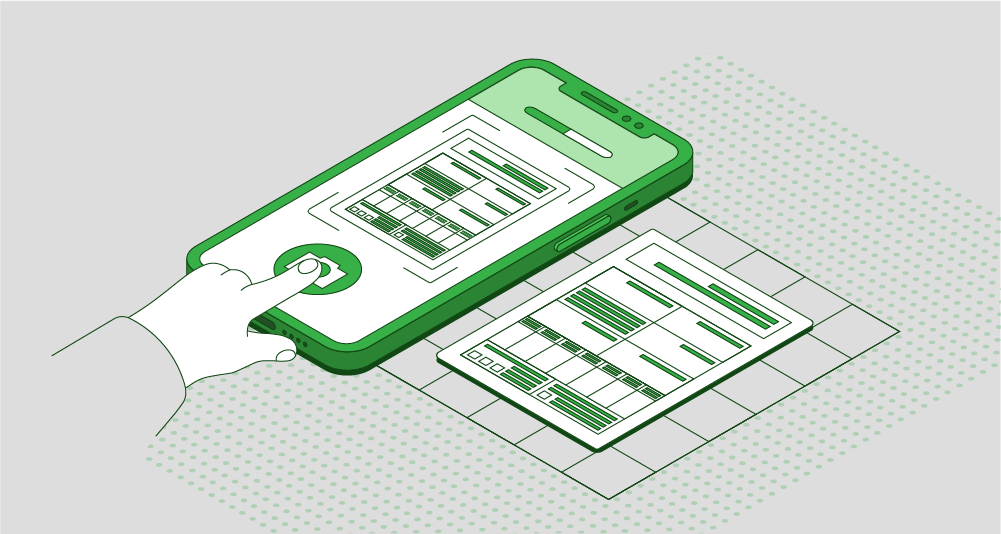
The difference between manual and automated processing of logistics document management
In the complex supply chain management business, the efficient handling of shipping documents is often a major hurdle. A recent purchase-to-pay performance study showed that only 19% of invoices in typical organizations are received electronically. This reliance on manual processes highlights the huge opportunities for automation within document generation.
When we think particularly of document processing systems that don't even require the complex step of supplier onboarding. While some progress has already been made - 30% of users use rules-based systems to read invoices - 50% of logistics companies have opted for a hybrid approach. They are still reusing templates for standard invoices and rules-based processing for more complex invoices, and printing them. The good news is that these systems are largely well integrated: 91% of organizations using OCR have seamlessly integrated their imaging systems into general operations.
How do you think it can change your business? This is with what we have come to you today. So, hurdles Tom and Rob aren't just exceptional for them but usual for many. Beyond the compelling reasons to adopt advanced document processing, there is a stark contrast between traditional manual document workflows and their automated approach. Below is a small guide that presents the invoice processing journey as a truly important document.
A cycle of labor and delays with manual, paper-based processes:
Arrival and entry. Invoices arrive as various documents, often via email, and require manual data entry into the accounts payable system, a process prone to human error and significant time consumption.
Approval routing. The invoice is then manually sent for approval, often involving physical routing or a chain of emails.
Review and matching. A reviewer must analyze and manually match the invoice with its corresponding purchase order.
Error and duplication check. Each invoice is manually checked for errors and potential duplications, a tedious and fallible task.
Supplier verification. Should any issues arise, the AP team must manually contact the supplier to verify invoice information, leading to further delays.
Final approval and payment. Following verification, the invoice is manually passed for final approval before payment can be made.
Archiving. The invoice might be manually archived once paid, potentially leading to disorganized records.
Efficiency, accuracy, and speed with the automated process of freight invoices:
Automated data capture. Invoice data is instantly captured using advanced technologies like optical character recognition, minimizing human intervention and eliminating manual entry errors.
Automated 3-way matching. The system intelligently performs a 3-way match, automatically verifying the invoice against the purchase order and goods receipt, flagging any discrepancies for immediate attention.
Streamlined approval workflow. The shipping document software automatically routes the invoice to the designated approver based on predefined rules, accelerating the approval cycle.
Swift payment and approval. Payment is promptly made once approved within the system.
Seamless archiving and ERP integration. The invoice is automatically archived digitally and seamlessly transferred to the enterprise resource planning (ERP) system, ensuring comprehensive, accessible records and real-time financial updates.
Let's take a look at our client, eTEU, which sought to revolutionize document management within the transport industry by addressing its inherent inefficiencies and vulnerabilities. The solution involved developing a blockchain-backed paperless documentation management platform. It was designed to streamline processes, enhance security, and significantly improve data transfer speeds. This was a comprehensive digital solution that tackles the core challenges faced by traditional shipping documents operations. Look with us at what was done here for eTEU:
Standardization of documents. By implementing a unified system for document generation and exchange. Well, I want to add that the platform resolves inconsistencies between companies and ensures compatibility across various stakeholders. This is particularly impactful for high-volume shipping documents like the Bill of Lading, where digitalization can lead to substantial cost savings.
By default, data security with accessibility. Leveraging blockchain technology, the platform provides robust encryption. All that is ensuring the security of sensitive data during transfer and storage. Crucially, it maintains accessibility for all authorized parties, ensuring everyone involved has real-time access to the same, verified information.
Efficient data transfer speed. The platform is engineered to handle high volumes of documentation with exceptional transaction processing speed.
Elimination of data exploitation risk. Blockchain's inherent traceability and immutability ensure that all changes and edits to documents are recorded and verifiable. This drastically reduces the risk of unauthorized alterations and provides irrefutable proof of authenticity and origin. Quite a nice job here.
Just think about it, embracing automation offers a wealth of advantages. Organizations can slash processing times and costs. It also leads to greater accuracy and improved compliance. Best of all, it frees up valuable staff, allowing them to focus on more strategic work.
Need help with document management systems development?
Learn how we can boost your business processes
Explore moreHow can an electronic document management system be implemented?
Implementing an electronic document management system (EDMS) in IT projects requires a strategic approach, blending a robust conceptual framework with practical implementation. Our analysis begins with a dual approach to electronic document management system (EDMS) development: a structural view for designing the overall system and an implementational view for defining the project phases.
The structural view allows us to blueprint the electronic document management system (EDMS) across key sub-models like architecture, data storage, documents, and functions. This provides a comprehensive understanding of the system's components. Concurrently, the implementational view guides the project through essential phases like specifying goals and tasks, designing the general conception, detailing the model's components, and defining technological conditions and requirements.
For IT companies, particularly small to medium-sized ones acting as contractors, the general electronic document management system (EDMS) model revolves around four core elements from a documentation perspective, like organizational resources, processes and procedures, electronic documents, and IT projects. These elements are tightly interconnected and form the foundation for managing project documentation effectively.
Leveraging this foundational understanding, we present three clear solutions for delivering an electronic document management system (EDMS), allowing you to choose what best fits your operations.
1. Using existing solutions for quick integration
This path focuses on leveraging readily available, off-the-shelf software to quickly establish your electronic document management system (EDMS) capabilities. Rapidly integrate suitable warehouse management systems (WMS), transportation management systems (TMS), and business intelligence (BI) tools that offer robust document management features. Plug-and-play configurations are typically designed for ease of use, allowing for quick setup and configuration with minimal custom development.
Advantages:
Rapid deployment. Get your electronic document management system (EDMS) up and running much faster.
Lower initial cost. Often requires less upfront investment in development.
Proven functionality. Benefits from established features and vendor support.
Disadvantages:
Limited customization. This may not perfectly align with unique workflow requirements.
Potential feature overload. You might pay for features you don't need or lack specific functionalities you desire.
Vendor lock-in. Dependence on a single vendor's roadmap and support.
2. Hybrid approach for the documentation process
A hybrid solution offers a balanced approach by combining the efficiency of existing tools with the tailored functionality of custom modules. A mix of ready-made tools with custom modules involves integrating suitable off-the-shelf components (e.g., for general document storage or basic reporting) with custom-built modules for specific needs, such as a personalized dashboard or a specialized routing engine for complex document approvals.
Advantages:
Increased flexibility. Adapts better to specific business processes than purely off-the-shelf solutions.
Operational costs and effective customization. Provides targeted customization without the expense of a full custom build.
Faster time-to-value. Custom elements can be developed while core functionalities are delivered by ready-made tools.
Disadvantages:
Integration complexity. Requires careful integration planning and execution between disparate systems.
Dependency on multiple developers. Managing relationships with off-the-shelf vendors and custom development teams.
Potential for inconsistent user experience. Different interfaces for different system parts.
3. Fully custom software by Adexin tailored for unique operations
For organizations with highly specialized needs or a desire for complete control and scalability, Adexin's fully custom-built electronic document management system (EDMS) is the ideal choice. We develop a bespoke electronic document management system (EDMS) architecture for your warehouses, delivery chains, or partner networks, ensuring a perfect fit for your operational intricacies. With custom-developed web and mobile applications, you can access your electronic document management system (EDMS) anytime, anywhere, ensuring seamless connectivity for your teams.
Our solutions effortlessly integrate with various APIs, including those from carriers, CRM systems, SAP, and more, creating a unified ecosystem for document management. We provide ongoing maintenance and support, ensuring your electronic document management system (EDMS) evolves with your business needs and remains robust.
Advantages:
Perfect fit. The system is tailored to your unique workflows and requirements.
Scalability and flexibility. Developed for future growth and adaptable to changing business needs.
Competitive advantage. A bespoke system can offer unique functionalities not available to competitors.
Full ownership and control. You own the intellectual property and control the system's direction.
Disadvantages:
Higher initial investment. Requires a larger upfront capital expenditure for development.
Longer development time. Building from scratch takes longer than configuring existing solutions.
Reliance on development partner: Requires a trusted and experienced development partner like Adexin.

The price of avoiding digital transformation
Sticking with paper-based and manual documentation processes in today's digital world can severely impact your transportation operations. Well, we know very well that it is leading to significant financial losses and operational inefficiencies.
Increased costs and penalties. Traditional documentation methods, like those in the logistics industry, are prone to human error and data inconsistencies. This often results in penalties and reputational damage. For instance, 91% of logistics and supply chain companies faced penalties in 2022 due to issues arising from a lack of paperless documentation. The slow and expensive process of handling physical documents, such as the Bill of Lading, further exacerbates these costs.
Lack of transparency and traceability. Without digital documents systems, tracking the origin and movement of goods becomes challenging, hindering compliance and making it difficult to respond to market demands promptly.
Operational bottlenecks and delays. Manual processes are inherently slower and more susceptible to errors, causing significant delays in transportation operations.
Data insecurity and exploitation risks. Paper documents are vulnerable to loss, damage, and unauthorized access.
Don't get stressed, but remember that sticking with outdated methods carries significant risks. Delaying your digital transformation can lead to continuing in Excel often means constant delays, frustrating errors, and potential penalties. Also, uncoordinated processes lead to a loss of resources. Unsynchronized operations can inflate your logistics spending by 1.5 to 2 times. And the wrong shipping document software will create more confusion without solving your core problems.
Are you in search of a reliable tech partner?
Adexin can help with advanced logistics solutions
Contact usFinal takeaway
It's time to move beyond the status quo and unlock new efficiencies. We offer two clear paths to begin this journey. You can either take the direct route by letting us discuss your specific logistics processes, after which we'll draft a tailored technical approach and a clear timeline or, if you prefer to see proof, you can explore our impact by browse our case studies to witness firsthand how we've helped logistics companies just like yours achieve significant success.
Don't let outdated systems slow down your business. Embrace digital transformation now to increase efficiency, improve safety, and ensure compliance. Are you ready for the changeover? Get in touch with us!


